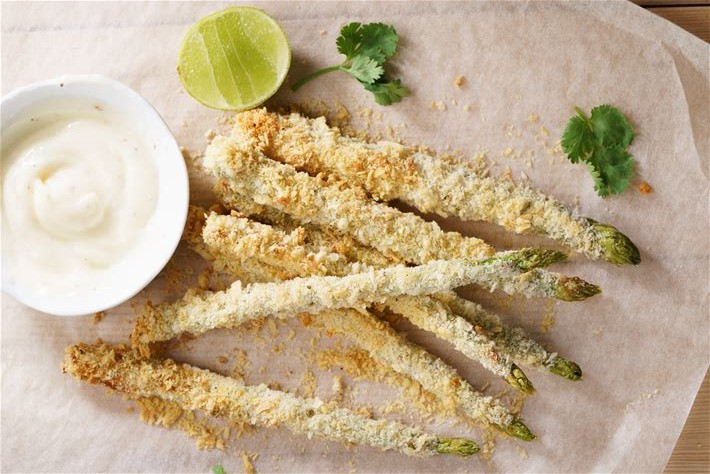
DID YOU KNOW?
How about a little "product" talk in this recipe?
Indeed, in the course of our culinary encounters with Valentine, I often tell you stories of history and culinary traditions, but what if today we went off the beaten track and asked ourselves strange questions like who this asparagus is and what story it has?
Once again, we're surprised by these life paths... A bit like everyone else!
Traces of asparagus can be found as far back as 3000 BC on Egyptian frescoes. It was prized for its taste and diuretic properties. The Romans and Greeks were very fond of it. Of course, asparagus was also noted for its
supposedly aphrodisiac virtues, certainly supported by its unequivocal shape! Strangely enough, asparagus doesn't seem to be mentioned in the Capitulary of Villis... Not prudish enough?
It certainly waited patiently for the effervescence of the Renaissance to arrive in Europe, and not by the quickest of routes; first cultivated in Flanders, it then made a timid appearance in our fields.
Its cultivation was perfected over the centuries, reaching its apogee at the court of Louis XIV, a great epicurean, and especially with his grandson, Louis XV, during the Siècle des Libertins... Madame de Pompadour made great use of it for its alleged virtues, to make up for a few shortcomings revealed by the insistent insistence of her royal lover, Louis XV.
Known at the time as the "Royal Vegetable", "Stemmed Spring", "Eating Ivory" or "Love Point", asparagus found its letters of nobility in the aristocracy.
Responding to a gastronomic need, asparagus is making a discreet entry into Switzerland, spreading to the eastern part of the country, the plateau and the Chablais region, much to our delight. Asparagus is the fruit of an ongoing process of drastic selection by our growers, and we invite you to discover it in a variety of culinary ways.
Today, I'd like to offer you a more playful, aperitif-style version!
Enjoy your meal!



